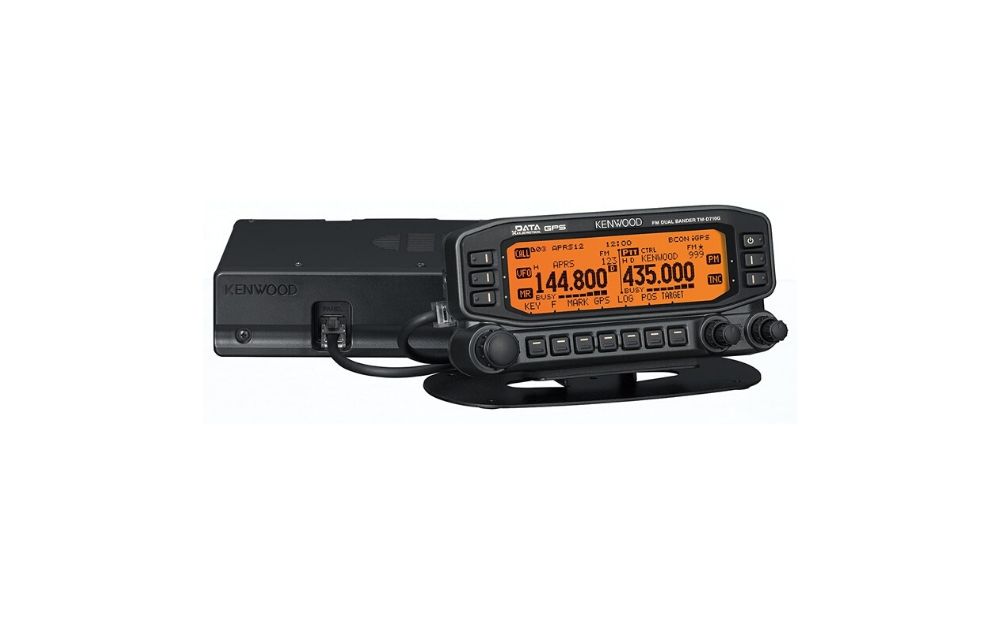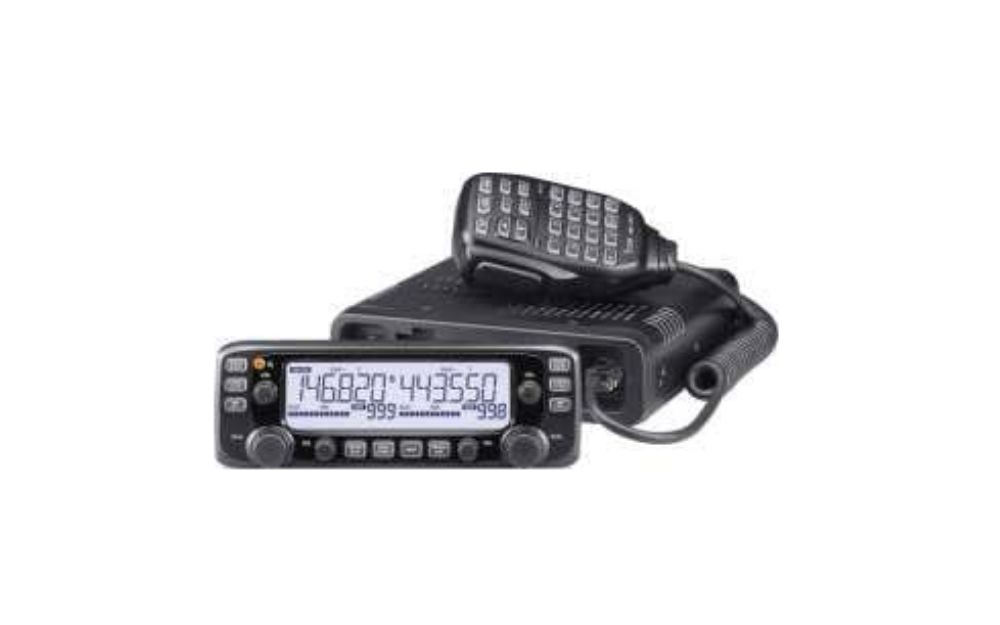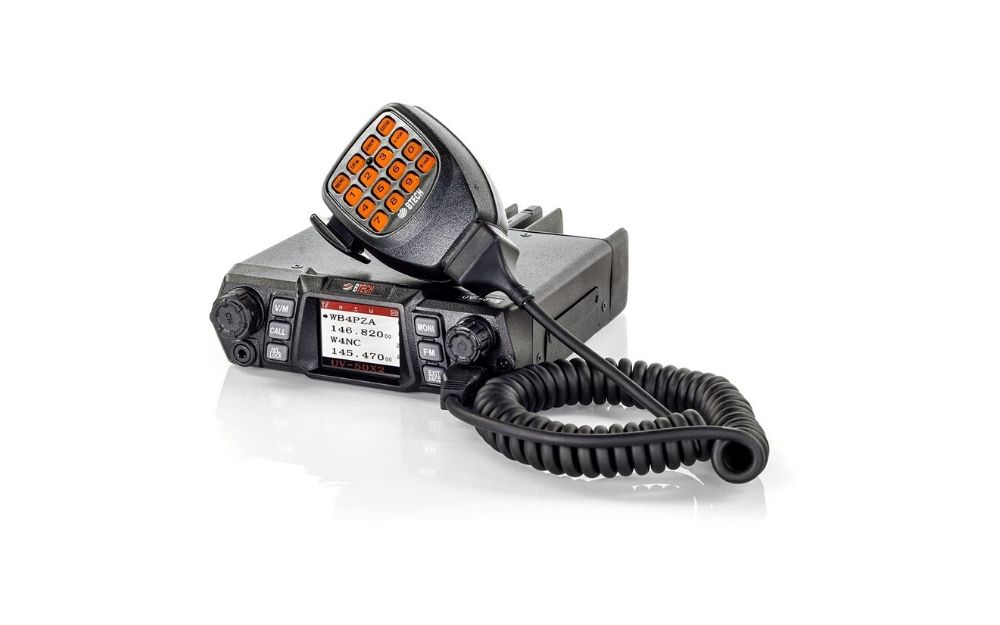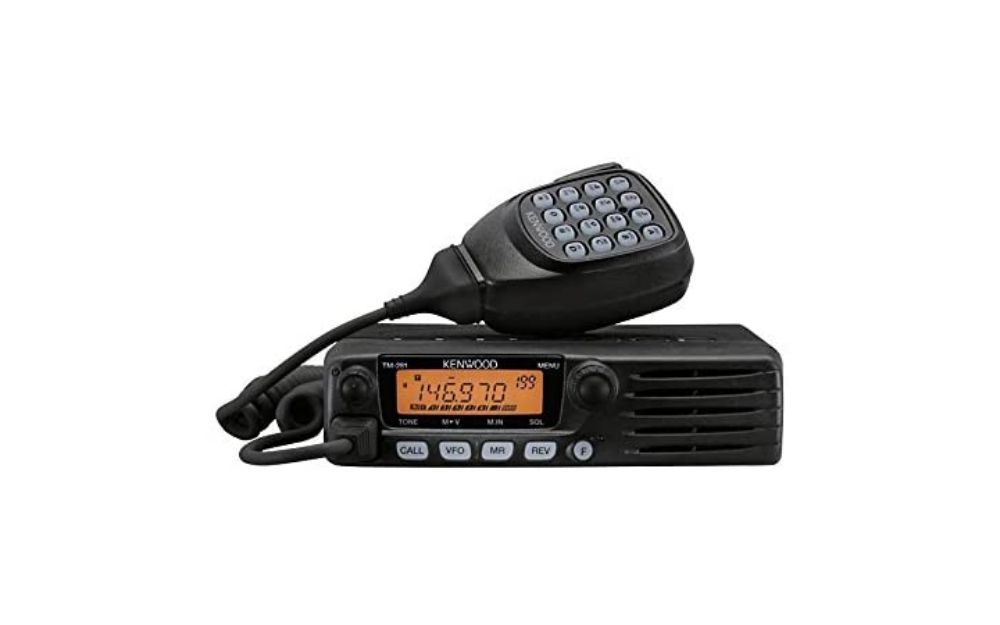Mobile ham radios are a practical way to communicate with people while you’re on the road, especially when in a remote place without any signal. The best mobile ham radio for the money allows you to communicate from thousands of miles away, especially during emergencies or natural disasters through its appropriate frequency range and power output.
Unlike handheld radios, mobile radios or transceivers are equipped with corded microphones and are usually installed inside vehicles. They’re paired with an external antenna for efficient transmission.
Let’s go straight into our mobile ham radio reviews and look at various features to get the most out of this device.
Best Mobile Ham Radios
| # | PREVIEW | Product | |
|---|---|---|---|
| 1
Best For Higher Budgets
1Kenwood TM-D710G Mobile Ham Radio
|
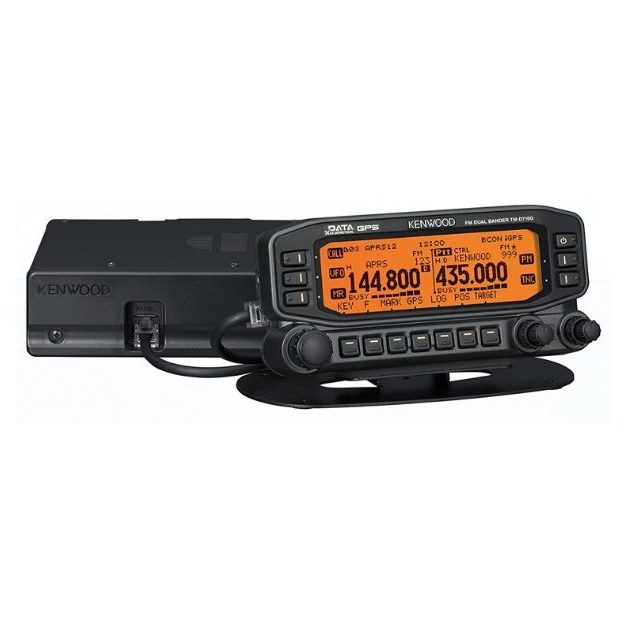
|
|
|
|
|
|||
| 2 |
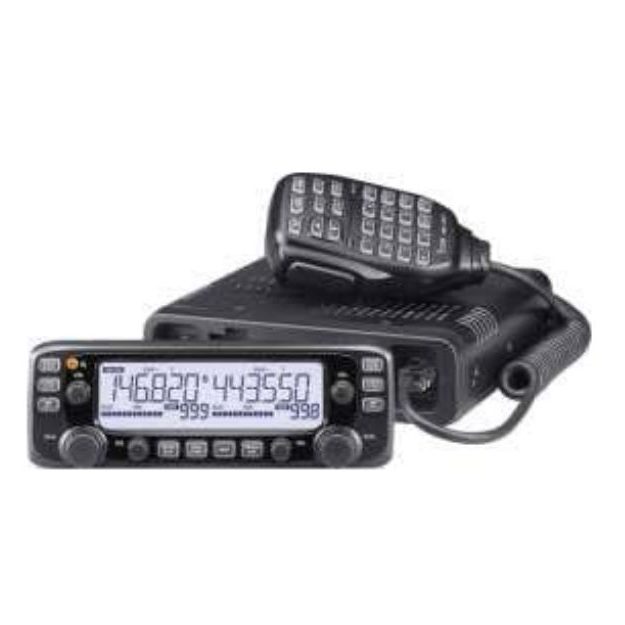
|
|
|
|
|
|||
| 3
Best Overall
3Btech UV-50X2 Mobile Ham Radio
|
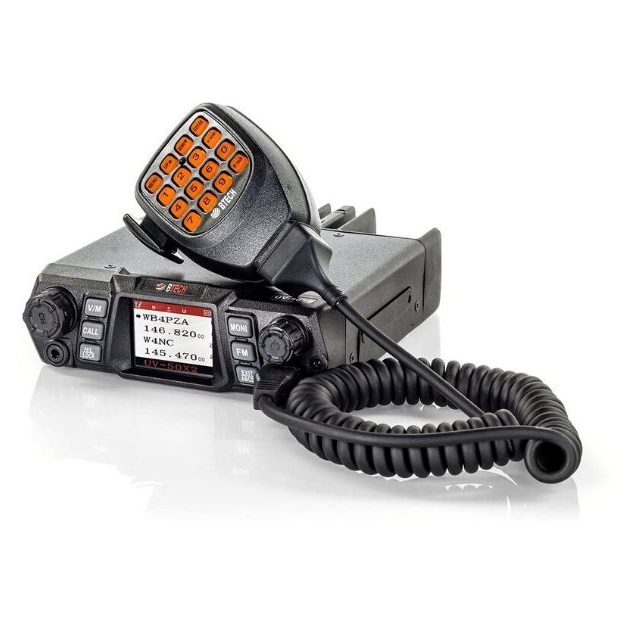
|
|
|
|
|
|||
| 4
Best For Low Budgets
4Kenwood TM-281A Mobile Ham Radio
|
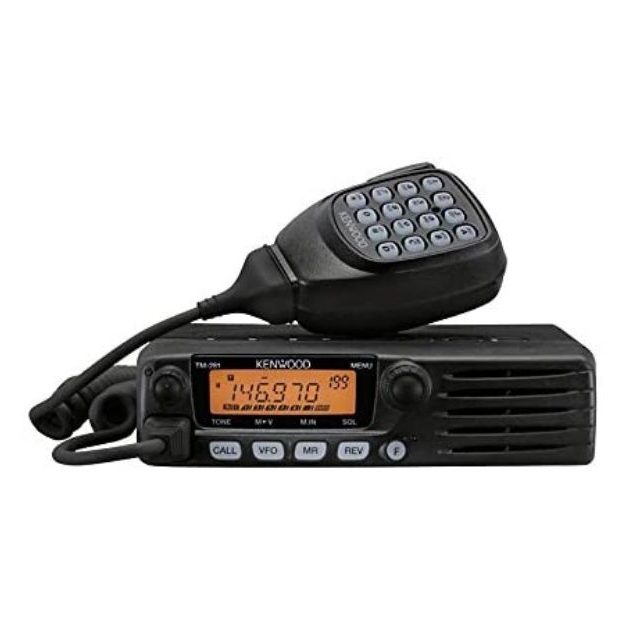
|
|
|
|
|
|||
1. Kenwood TM-D710G Mobile Ham Radio
- EchoLink technology
- APRS-enabled
- Weather alerts
- Can squelch as many as 104 codes
The Kenwood TM-D710G covers VHF and UHF bands. It has a wide reception ranging from 118 to 524 megahertz and 800 to 1,300MHz, excluding frequencies blocked for cellular phone signals. Its maximum power output is 50 watts.
The mobile ham radio with built-in global positioning system (GPS) also features 1,000 multi-function memory channels and 10 dedicated EchoLink memory channels. The EchoLink software permits licensed amateur radio stations to communicate online using the internet’s streaming audio technology.
This product comes with an AX.25 standard terminal node controller (TNC) that allows Automatic Packet Reporting System (APRS) operation, which is used for sending real-time position information and other messages over the radio. In the United States, the APRS is 144.39mhz.
Kenwood TM-D710G also has Continuous Tone-Coded Squelch System (CTCSS) and Digital Code Squelch (DCS), allowing you to ignore unwanted calls, covering 104 codes. It features a big LCD display with a green or amber backlighting and a 16-key hand microphone with backlighting.
Specifications
Pros
- Wideband receiver
- Built-in GPS
- 1,000 programmable memory channels
Cons
- Expensive
- APRS sound
2. ICom IC-2730A Mobile Ham Radio
- Bluetooth capability
- Programming software
- Split tone function for CTCSS and DTCS
- Weather alerts
The ICom IC-2730A has a maximum output power of 50 watts on both VHF and UHF bands.
It can communicate on a wide range of frequencies from 118 to 174 megahertz on VHF and 375 to 550MHz on UHF. This lets you to listen to weather, aviation, marine, and other utility communication channels.
It features 1,052 memory channels and a versatile scanning capability. You can activate its Bluetooth capability by installing the UT-137 plug-in module for hands-free voice-operated exchange (VOX). ICom offers an optional VS-3 Bluetooth headset to complete your VOX experience.
This radio has a split tone function that covers 50 CTCSS and 104 DTCS tones. ICom IC-2730A’s LCD display is 1.5 times bigger than its predecessor, the IC-2720, and features white backlighting.
Users of the ICom IC-2730A will also have access to downloadable programming software that allows them to easily view, edit, and manage memory channel data and the ham radio’s menu settings.
Specifications
Pros
- Wideband receiver
- 1,052 memory channels
- Large display
Cons
- Noisy fan
3. Btech UV-50X2 Mobile Ham Radio
- Dual synchronize display
- Allows multi-channel monitoring through CHIRP
- Adjustable microphone volume
- Nine colour options for LCD display
Btech’s dual synchronize mode allows you to view two frequencies at once on the LCD display, with a frequency range from 136 to 174 megahertz on VHF and 400 to 520MHz on UHF. It has a 50-watt maximum output on both bands.
You can monitor up to four channels at once, with 144 megahertz or 430 MHZ as your main TX/RX band. Transmissions are loud and clear with the unit’s loud two-watt speaker. You can also easily raise or lower the volume of your microphone through the in-menu adjustment.
This product can also help you tap into the 65 to 108MHz frequency for commercial FM radio reception.
You can pair it with a PC04 FTDI cable to program your channels via computer with CHIRP software. With up to 200 programmable channels, its scan settings can be saved and remain in the device’s memory even when it reboots.
Specifications
Pros
- 200 programmable channels
- Loud speaker
- Mounting hardware included
- FM radio
Cons
- Small display
4. Kenwood TM-281A Mobile Ham Radio
- MIL-STD 810 construction
- High power output
- Built-in CTCSS and DCS encoder/decoder
- Automatic simplex checker
This Kenwood product has a durable chassis that meets the U.S. Department of Defences’ military standard for withstanding vibration and shock.
The 136 to 174-megahertz transceiver with hand microphone has a high power output of 65 watts.
The device can store up to 100 channels in its internal memory or 200 channels if you won’t use alpha-numeric characters to identify them. Programming can be done by computer using a KPG-46U cable and MCP-1A memory control software.
The squelch encoder and decoder cover 104 DCS sub-tone frequencies and 42 CTCSS sub-tone frequencies. The Kenwood TM-281A also has an automatic simplex checker, which monitors the strength of a signal you’re getting from a repeater, and reverse function, which lets you check the signal strength of a station accessing the repeater.
Specifications
Pros
- Computer programmable
- Large speaker
Cons
- Single band (VHF)
- Only saves up to 100 channels using 6 alphanumeric characters
Mobile Ham Radio Buying Guide
Mobile Ham Radio Antenna
Check the following qualities of an antenna to make sure it improves the quality of the signals you transmit over the airwaves.
Antenna type
There are two general kinds of vehicular antennas: solids and whips. Solid antennas are like your CB (citizens band) fiberglass antennas but with a thick wrapping to protect the actual antenna.
Meanwhile, whip antennas are thin and long, usually found with a loading coil in its mid-section. The more flexible “whips” can take the impact of trees and brush when you go off-roading compared to solid units.
Band coverage
Most antennas provide dual to multiple band access which widens your reach and raises your signal performance. A dual-band antenna with VHF and UHF coverage is good enough for ordinary mobile ham radio users.
Signal gain rating
The antenna’s signal gain rating (measured in decibels or db) boosts the strength of your transmitted signals.
Height
The longer your antenna, the stronger signal strength you have. A long antenna with a high gain rating covers longer distances with little to no quality loss.
Cable connector
Most ham radio operators use coaxial cables, the current standard for delivering strong frequency signals over long distances, to help minimize signal loss.
Programmability
Many ham radios can be programmed manually and through the computer. Study the description of your desired product to verify if you can adjust its settings, like storing and managing channels, using your PC.
Antenna Mounts
Every antenna needs to be mounted securely on your vehicle for it to properly support the operations of your mobile ham radio. The different kinds of antenna mounts include:
- Permanent mounts – are installed permanently on a flat surface through an existing hole or hole to be drilled on your vehicle.
- Semi-permanent mounts – like trunk lip and hood/fender mounts are semi-permanently mounted on your vehicles through clamps.
- Temporary mounts – can be attached to your vehicle through detachable clips. Examples of this include magnetic mounts (“mag-mounts”) and on-glass mounts that can be attached to your vehicle’s windows or windshields.
Applications
Smartphone app developers came up with free tools to help support mobile ham radio operators. Some examples of these downloadable apps are:
- Echolink – makes your smartphone function like a handie-talkie, allowing you to connect with anyone on the global EchoLink network through audio streaming as long as you’re a licensed operator.
- HamSphere – is a shortwave simulation that allows you to talk with other ham radio operators worldwide even without a license. All you need is to have a HamSphere call sign.
- Ham Square – tracks and displays your maidenhead designation.
- QRZ – the smartphone app of QRZ.com, the amateur call sign lookup website.
- Repeater Book – allows you to find local repeaters on any band using your phone’s GPS.
- Zello – turns your phone into a walkie-talkie, connecting you to private and public channels.
We advise potential buyers of car ham radios to look for products that can be programmed using certain apps, APRS, or Bluetooth so that you can do hands-free communication while driving.
Features
Consider these factors when choosing the best mobile ham radio for the money:
Durability
Ham radios of high build quality should not easily conk out if they accidentally drop or get hit by something after you pass through rocky terrain.
Size
A good mobile ham radio should be small and light enough to be easily installed inside your vehicle without taking too much space.
Power
The power output of your radio must match your communication needs. Three to five watts is enough for short-range emergency communication. For a wider reach, choose a dual-band radio with a minimum power of 25 watts.
Coverage
The amount of bandwidth you need also depends on your communication purposes. Ham radio band types are named according to the average signal wavelength of the frequencies within that band, the most common of which are: two-meter VHF (144 to 148 megahertz), six-meter VHF (around 50MHz), 10-meter high frequency (around 28MHz), and 70-centimeter UHF (420 to 450MHz).
Channels
You can program your radio to remember certain channels or frequencies by saving them into its internal memory.
Mobile Ham Radio Setup & Installation
Remember these tips when installing your device:
- Choose a spot where the radio’s control head and its chassis won’t interfere with your driving, airbag, and safety equipment. It also shouldn’t be installed where they may harm passengers. Avoid placing the radio in your car’s footwell or unventilated places such as the trunk or inside a bed-mounted storage box. Instead, the radio head and microphone should be within easy reach. The radio head should be mounted in an area where it—especially the rear of the device—will enjoy plenty of airflow as it can easily heat up.
- Check your radio’s manual to determine how to properly wire the cables of your radio into the engine compartment and your vehicle’s battery.
- Upon choosing where to locate your device, buy suitable mounting brackets and use them to lock your devices in place.
- When selecting the location for your mobile antenna mount, review the different mount types listed earlier to determine your options.
Mobile Ham Radio Kit
Some mobile ham radio units are sold in kits with accessories to make installation easier. These include mounting brackets, the control cable connecting the control head to the radio’s main body, an extension speaker, and cable connector for the speaker.
Bands
Mobile ham radios have a wide range of frequencies. While most units sold on the market are dual band mobile ham radios, other products support three bands or more.
Dual-Band
Very high frequency (VHF) and ultra-high frequency (UHF) are the two major wavelengths for vehicle-to-vehicle and vehicle-to-base communications. VHF is 30 to 300MHz while UHF is 300MHz to 3 gigahertz. VHF has longer wavelengths that travel farther than UHF, which has smaller waves that degrade over distance.
Tri-Band
Most amateur radio operators flock the frequencies between the two-meter and 70-centimeter bands. Tri-band mobile ham radios allow them to use the less crowded 1.25-meter band that range from 220 to 225 MHz on VHF.
Quad-Band
Quad-band radios are capable of four band transmissions, usually consisting of the following: 10-meter high frequency, six-meter VHF, two-meter VHF, and 70-centimeter UHF.
All-Band
All-band radios can transmit and receive on the HF, VHF bands, and 70-centimeter band.
Licenses
There are three types of licenses for mobile ham radio operators:
- Technician license
This entry-level license allows you to use all amateur VHF and UHF bands above 30MHz, or most local frequencies, and limited HF bands if you pass the test.
- General license
Passers of the technician license exam can take a test for this license that will allow sending communications internationally (10 HF bands).
- Amateur extra license
This top-level ham radio license will grant you access to all bands. A general license is a pre-requisite to taking an exam for this license.
Frequently Asked Questions

While you don’t need a license to listen to or receive ham radio signals and messages, a license is required for transmissions.
It’s risky to operate without a license because if you rely on radio communications for business but the Federal Communications Commission doesn’t recognize you, the channels you depend on could be assigned to someone else without your knowledge.
License holders can also file complaints against you for “trespassing” into their channels or frequencies. A license will ensure your frequency won’t overlap with that of others.
Our Verdict
Although some sectors think they have become obsolete, mobile ham radio usage is still very much supported, based on the outcome of the most recent Amateur Radio Field Day in Florida last June 2019 and recent events such as the California state government’s clarification in October 2019 about its continued reliance on amateur radio for emergency communication.
Mobile ham radios continue to be forces to reckon with at this time when smartphones seem to reign supreme. People will turn to these devices in case internet and cell phone networks are stretched to their limits as the general public continue to stay at home due to COVID-19.
Using the pointers in our buying guide, you can equip yourself with an effective backup communication system during this crisis.

